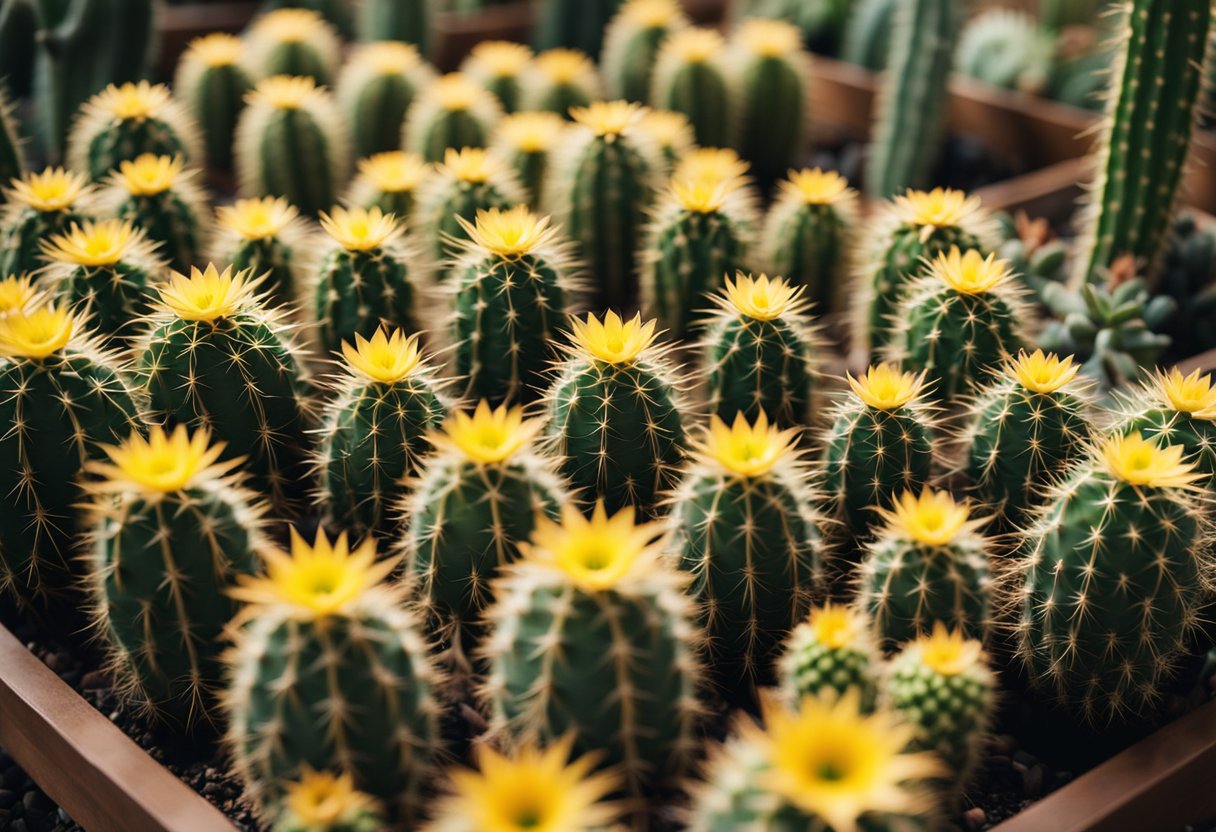Barrel cacti, with their striking cylindrical shapes and vivid spines, add a distinctive aesthetic to any garden or indoor space. However, when these mostly resilient plants begin to turn yellow, it can be a cause for concern. Understanding the underlying issues that contribute to this discoloration can help you restore your cactus to its lush, green glory. This article delves into the common reasons why a barrel cactus might be turning yellow and provides effective solutions to address these issues.
Understanding the Significance of Yellowing
The yellowing of a barrel cactus is not merely a cosmetic concern; it often signals a deeper malaise. The vibrant green color of a healthy cactus indicates its ability to photosynthesize effectively, converting sunlight into energy. When yellowing occurs, this function is compromised, leading to potential long-term damage. Identifying the cause of this alteration is crucial for recovery and the longevity of the plant.
Poor Watering Practices: The Double-Edged Sword
One of the most prevalent causes of yellowing in barrel cacti is improper watering—either overwatering or underwatering. Cacti are native to arid environments and have evolved to thrive with minimal water. Thus, their roots can easily rot if water retention becomes excessive.
Overwatering can lead to a condition known as root rot, where the roots begin to decay, resulting in the plant’s inability to absorb nutrients and water effectively. This may manifest as yellowing of the plant’s body, as it struggles to sustain itself. Conversely, underwatering will also lead to stress, causing the cactus to yellow as it conserves resources. An established watering schedule is essential: ensure the compost dries out between waterings, with more frequent checks during the growing season (spring and summer) and reduced frequencies during dormancy (fall and winter).
Soil Quality and Composition: The Unsung Hero
The composition of the soil plays a significant role in the health of your barrel cactus. Cacti require well-draining soil to prevent waterlogging. Using a premixed cactus soil, which typically comprises sand, perlite, and potting soil, can create an environment conducive to optimal drainage. If your soil retains too much moisture or is highly compacted, the plant may begin to yellow due to lack of oxygen around the roots or nutrient imbalances.
It’s also vital to monitor the pH level of the soil—barrel cacti prefer a slightly acidic to neutral pH range. Soil that is too alkaline can hinder nutrient uptake. Regularly testing the soil, coupled with appropriate amendments, can help maintain the right growing conditions for your cactus.
Sunlight Exposure: The Balance of Light
Barrel cacti thrive in direct sunlight, often requiring at least six hours of bright light daily. However, there is a fine balance; sudden exposure to intense sunlight can also lead to sunburn, which may cause yellow patches on the surface of the cactus. This situation is common when a cactus has been indoors for too long and is abruptly placed outside.
To prevent yellowing due to light stress, acclimate your cactus gradually to new light conditions. If you notice that your cactus is yellowing due to excess sun exposure, consider placing it in a location with filtered light or providing shade during the hottest parts of the day.
Pests and Diseases: The Hidden Threats
Barrel cacti are not immune to pest infestations, which can lead to their decline in health. Common culprits include mealybugs and spider mites, both of which sap the plant’s vitality. Infestations may cause yellowing, wilting, or even the dropping of spines. Regularly inspecting your cactus for these pests is a prudent practice.
If you detect a pest problem, treatment options include insecticidal soap or horticultural oil, both of which target soft-bodied insects while being gentle on the plant. For more stubborn infestations, neem oil can serve as a natural insecticide. Ensure that any treatment is applied according to the manufacturer’s directions to avoid further stress to the plant.
Fungal Infections: The Silent Saboteur
In addition to pests, fungal infections can also compromise the health of a barrel cactus. Symptoms often include a yellowing or browning appearance, particularly at the base or stem. These infections tend to thrive in overly damp conditions, further underscoring the importance of proper watering techniques.
To combat fungal issues, ensuring adequate air circulation around the plant is essential. Moreover, using a fungicide specifically designed for cacti can help eradicate the infection. Remember to remove any infected parts of the cactus to prevent the spread of the fungus.
Conclusion: Striving for Resilience
A yellowing barrel cactus should not be dismissed as an irreversible sign of decline; rather, it is an opportunity for intervention and learning. By identifying the various factors contributing to the discoloration—whether they be watering practices, soil quality, sunlight exposure, pest infestations, or fungal infections—you can take concrete steps to restore your cactus to its vibrant state. Each yellowing spire serves as a reminder of the complexity of plant care and the beauty of thriving ecosystems.





Leave a Comment